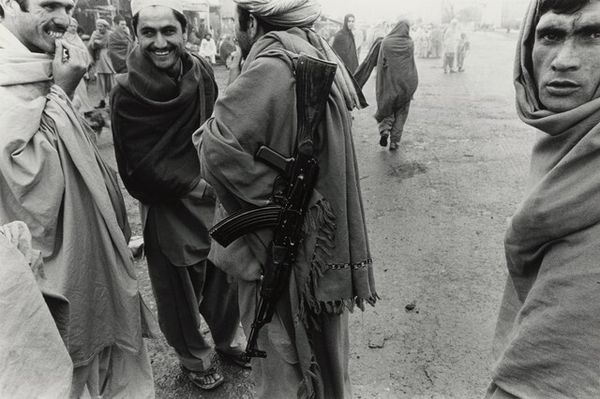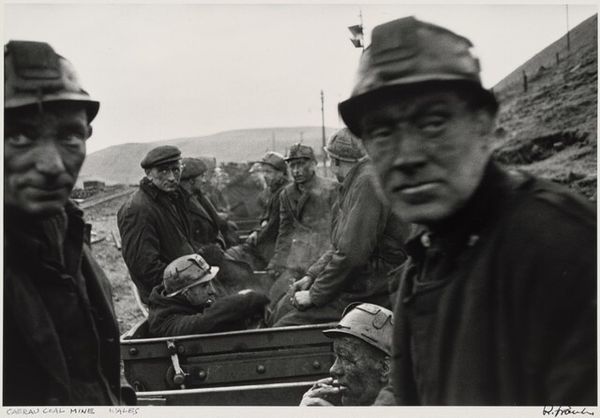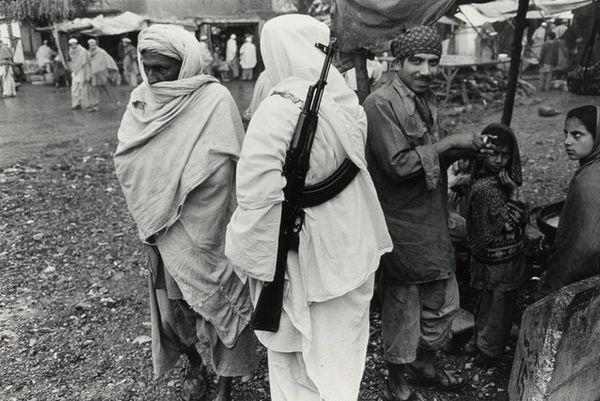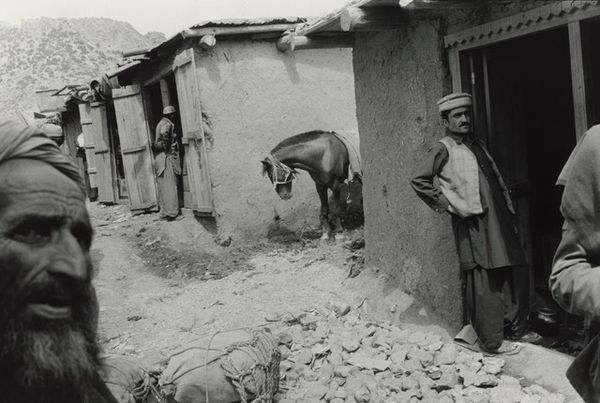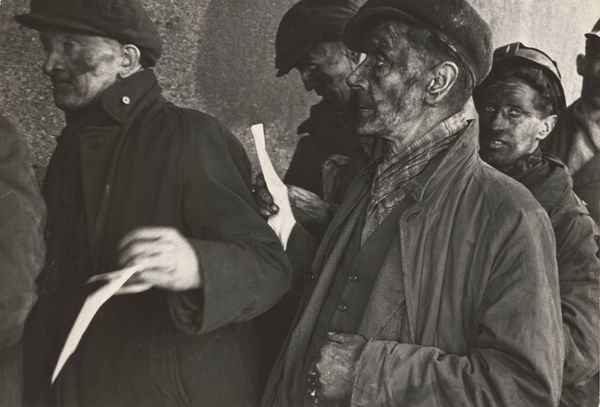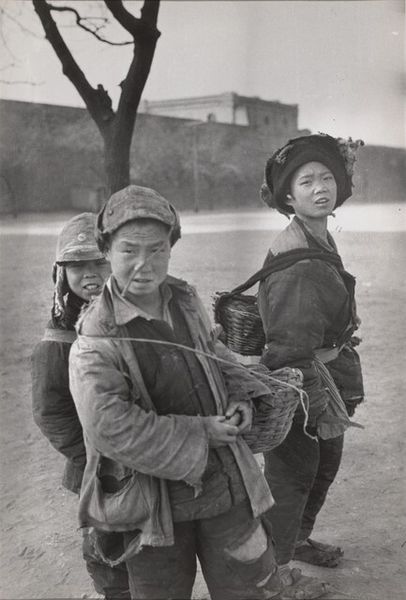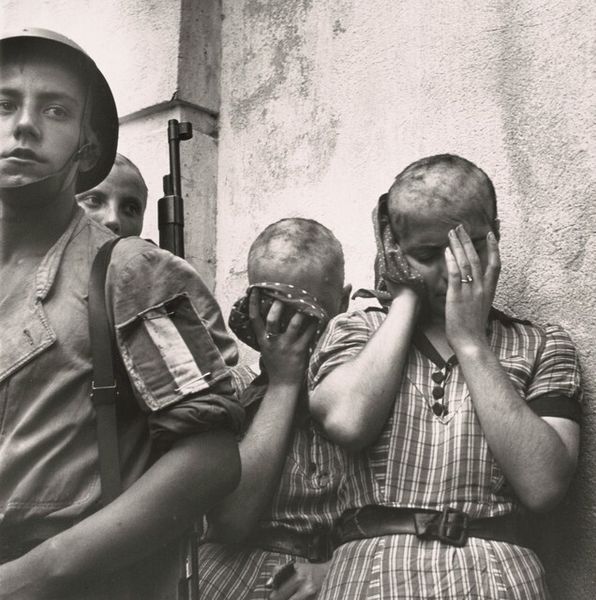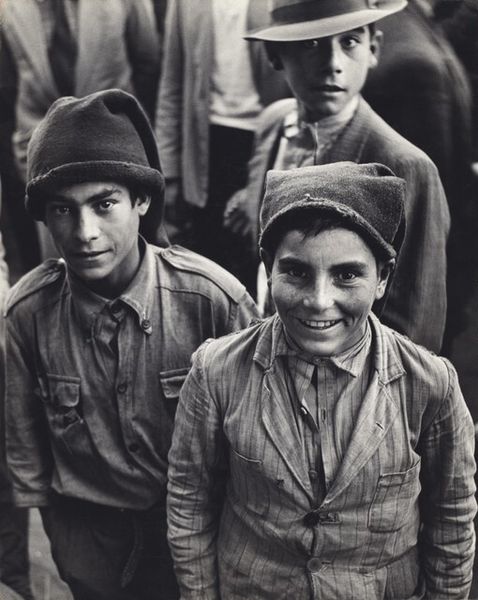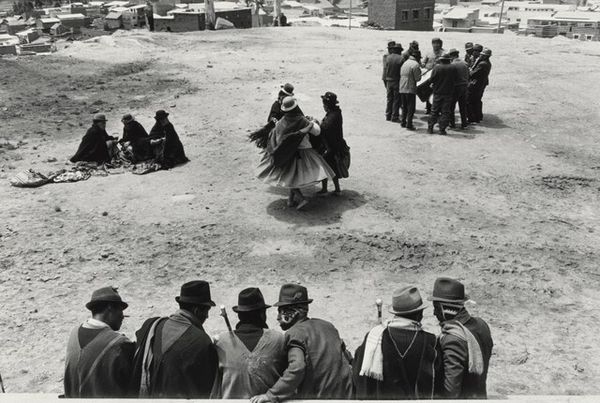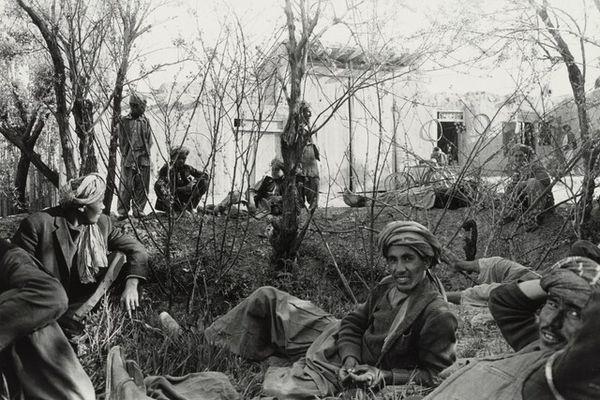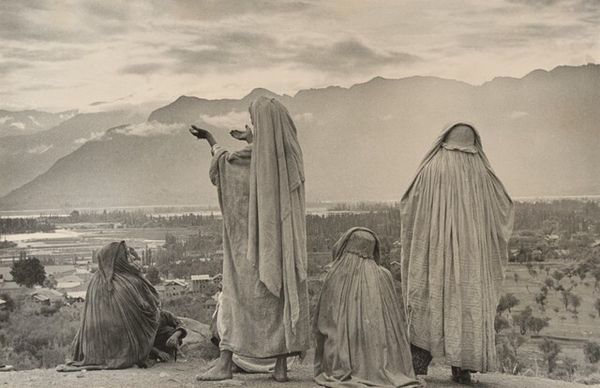
photography, gelatin-silver-print
#
portrait
#
black and white photography
#
social-realism
#
photography
#
photojournalism
#
gelatin-silver-print
#
monochrome photography
Dimensions: image: 26 × 39 cm (10 1/4 × 15 3/8 in.) sheet: 35.56 × 43.18 cm (14 × 17 in.)
Copyright: National Gallery of Art: CC0 1.0
Editor: This gelatin-silver print, "Afghan Refugees, Bajur, Pakistan" by Ed Grazda from 1980, is remarkably dense. The sheer number of faces creates an overwhelming sense of displacement. How do we begin to unpack this through a materialist lens? Curator: Focus first on the materials themselves. The gelatin-silver print. Mass-produced. Designed for dissemination. This wasn't some elite artistic process, but one capable of rapidly reproducing images for wide consumption. Think about the labour involved in that production, from the factory workers making the photographic paper to Grazda, the photographer himself documenting this crisis. Editor: So, it's less about the artistry and more about the means of conveying a message to the masses? Curator: Exactly. Consider the social context of the photograph too. 1980. The Soviet invasion of Afghanistan. The ensuing refugee crisis. The photograph isn't just an aesthetic object, it's a document embedded in a web of political and economic forces. How does its dissemination contribute to our understanding of global power structures? What role does photography play in shaping public opinion and influencing humanitarian aid? Editor: I see what you mean. By looking at the material - this repeatable gelatin-silver print - we can move beyond the immediate emotional impact to consider the photograph's function as a tool within a much larger system of information and power. Curator: Precisely! Even the "artistic" choices – the composition, the contrast – are choices made within that system, serving to amplify its impact on the viewer and to encourage reflection on the material realities of this historical moment. Editor: Thanks for clarifying that. Thinking about the materiality and its context definitely shifts the perspective from individual suffering to larger systematic concerns of conflict and aid. Curator: Yes, considering the material realities and labor connected to image-making prompts more thoughtful discussions regarding these critical moments in history.
Comments
No comments
Be the first to comment and join the conversation on the ultimate creative platform.
